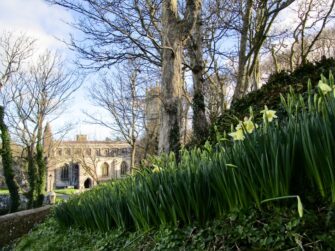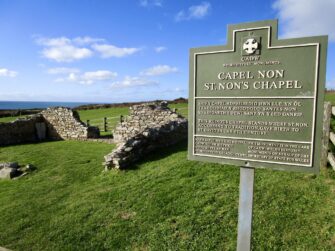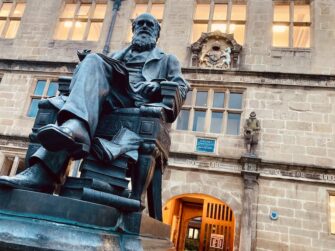

Something is stirring in Britain’s smallest city.
Green stemmed and canary-yellow-hued, the daffodils are emerging in the grounds of St Davids Cathedral, the holy site founded by St David [see images above], known locally as Dewi Sant, as a sixth-century monastery.
The daffodils herald the arrival of spring, releasing the close-knit Pembrokeshire community from its winter slumbers.
They also signpost St David’s Day today, celebrating the hairshirt-sporting Welsh patron saint, who is embraced by Wales but with revered with prodigal pride in St Davids.
What’s more, this year’s celebrations mark a significant anniversary: 900 years since 12th century Pope Callixtus II decreed that two pilgrimages to St Davids were equivalent to one to Rome.
I was in Pembrokeshire last week to preview events for St Davids Day, chatting with the locals for a feature with Telegraph Travel. The story was published on March 1st.
“Dewi was known as the water man,” says The Very Revd Dr Sarah Rowland Jones, Dean of St Davids Cathedral. “To this day, he embodies the idea that, if you live a disciplined life, then you will enjoy the riches money can’t buy.”
Diminutive St Davids had its city status reaffirmed by Queen Elizabeth II in 1994 in recognition of its early Christian heritage.
The westerly peninsula is bordered by the Pembrokeshire Coast Path National Trail and a bracing stroll from the cathedral leads to the ruins of St Non’s Chapel, where folk legend says Dewi was born around 500AD.
The waters of the nearby holy well, which gurgled up from the earth at Dewi’s birth, are said to possess curative powers, while the view stretches over St Brides Bay to the RSPB bird reserve of Ramsey Island.
Read the full feature via Telegraph Travel Welcome to St Davids, Britain’s smallest city.



